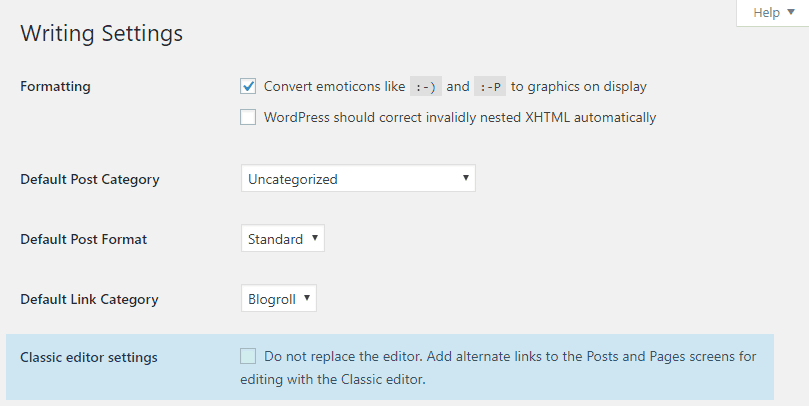How to disable Gutenberg and return to the Classic WordPress Editor. The WordPress Classic Editor Plugin replaces WordPress Gutenberg and is one of the best free WordPress Plugins for blogs, to disable Gutenberg and return to the Classic WordPress Editor.
WordPress makes it easy to disable Gutenberg and return to using the classic editor (aka: TinyMCE). First, you’ll need to install & activate the Classic Editor plugin. After that, let’s walk through a few different options you have.
Classic Editor restores the previous Edit Post screen and makes it possible to use the WordPress plugins that extend it, add old-style meta boxes, or otherwise depend on the previous editor. — WordPress
WordPress Classic Editor Plugin
When disabling Gutenberg, you have two different modes to choose from:
- Always use the classic editor (completely removes Gutenberg)
- Switch between Gutenberg & the classic editor (using different links)
Always Use Classic Editor
This is the default option. As soon as you activate the plugin, Gutenberg will be completely disabled. All of your post & page edit screens will look like they did in WordPress 4.9 and below. That’s it! Happy editing
Switch Between Gutenberg & Classic Editor
Classic Editor
Download https://wordpress.org/plugins/classic-editor/
Classic Editor is an official plugin maintained by the WordPress team that restores the previous (“classic”) WordPress editor and the “Edit Post” screen. It makes it possible to use plugins that extend that screen, add old-style meta boxes, or otherwise depend on the previous editor. Classic Editor is an official WordPress plugin, and will be fully supported and maintained until at least 2022, or as long as is necessary.
By default, this plugin hides all functionality available in the new Block Editor (“Gutenberg”). In addition, the Classic Editor plugin includes several filters that let other plugins control the settings, and the editor choice per post and per post type.
Once installed:
- Head over to Settings > Writing, and look for “Classic editor settings.”
- Check the box that says “Do not replace the editor.”
- Save Changes

Now you have the option to use Gutenberg on some posts/pages, and the classic editor on others. Let me show you how.
How to edit with Gutenberg
To use Gutenberg, simply click on a post/page title, or the use the “Edit” link. Essentially, do the same thing you’ve always done to edit a post. Only now, you’ll be taken to Gutenberg.

How to use the classic editor
To use the classic editor, you’ll need to click the “Classic Editor” link instead (shown above in blue). This will take you to the previous TinyMCE editing experience you are already used to.
You’ll also see a link to use the classic editor in your admin toolbar at the top of the Edit Post screen.

This is how you can revert to the classic WordPress Editor.
More Info – https://gogutenberg.com/disable-gutenberg/
